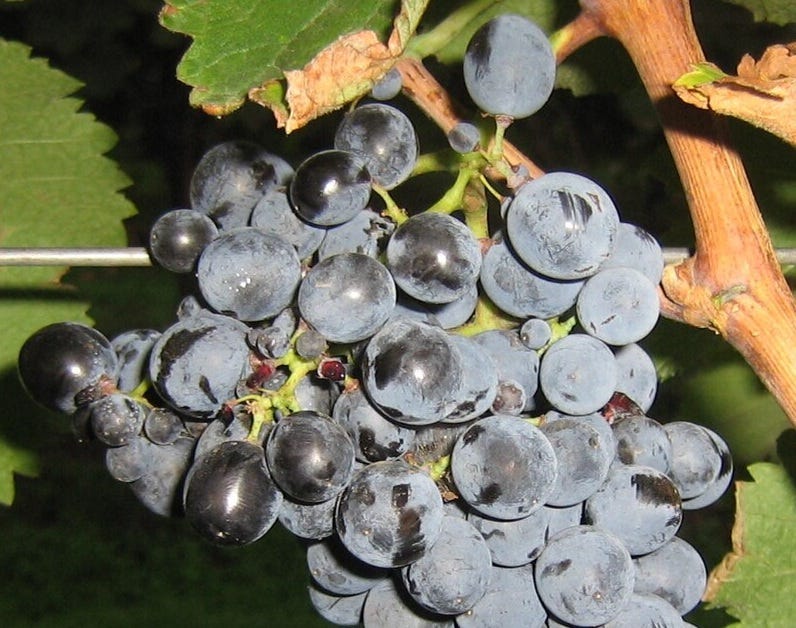Saperavi is perhaps the world’s oldest distinctive red grape variety, hailing from the Caucasus nation of Georgia, where winemaking dates back over 8,000 years. The name Saperavi means “dye” or “to paint” in Georgian—a fitting term for this deeply pigmented, teinturier grape, which uniquely has red flesh as well as red skin. This genetic trait sets it apart from most red wine grapes, which typically have clear pulp.
Historically cultivated in Georgia’s eastern Kakheti region, Saperavi has become emblematic of the country’s winemaking heritage. It thrives in Kakheti’s continental climate, especially in vineyards around Telavi and the Alazani River Valley. Over centuries, it has developed a strong resistance to cold and disease, making it a reliable cultivar even in marginal years.
Saperavi grapes produce full-bodied, deeply colored wines with high acidity and robust tannin structure. The flavor profile typically includes black cherry, plum, mulberry, blackcurrant, and earthy undertones, often with hints of licorice, leather, and smoke as the wine ages. Its naturally high acidity allows for long aging potential, and its firm tannins give it excellent structure. Oak aging enhances complexity, although traditional Georgian methods favor clay qvevri vessels buried underground.
What truly distinguishes Saperavi, apart from its teinturier nature, is its versatility. It is made into dry reds, semi-sweets, fortified wines, and traditional qvevri wines. The dry style, often aged in oak, is bold and complex. Meanwhile, semi-sweet versions, like those from the Kindzmarauli and Akhasheni appellations, are rich and fruit-forward, balancing sweetness with refreshing acidity.
In recent decades, Saperavi has gained international attention. It’s now grown in countries with cooler climates such as Russia, Ukraine, Moldova, Armenia, and increasingly in New World wine regions like Australia and the Finger Lakes of New York, where its cold-hardiness and deep color are valued. While Georgian Saperavi tends to emphasize tradition and terroir, New World producers often explore more modern styles.
Modern winemakers in Georgia are experimenting with blending Saperavi with international varieties or vinifying it using both traditional qvevri and European methods to suit a broader global palate. As global wine consumers seek more authenticity and indigenous grapes, Saperavi has become a leading ambassador of Georgian viticulture.
Despite its growing global recognition, Saperavi remains deeply tied to Georgia’s national identity. Many Georgian families still produce their own Saperavi at home, and the grape features heavily in regional wine festivals and hospitality rituals. It is not merely a commercial crop, but a cultural artifact—representing resilience, continuity, and deep-rooted tradition.
For wine enthusiasts seeking something bold yet different, Saperavi offers a compelling alternative to better-known grapes like Cabernet Sauvignon or Syrah. Its capacity for aging, its dark color, and its uniquely Georgian character make it one of the most exciting heritage varietals on the market today.
Image Credit: https://wikipedia.org
_ _ _
© CHURRASCO PHUKET STEAKHOUSE / ALL RIGHTS RESERVED
Reprinting, reposting & sharing allowed, in exchange for a backlink and credits
Churrasco Phuket Steakhouse serves affordable Wagyu and Black Angus steaks and burgers. We are open daily from 12noon to 11pm at Jungceylon Shopping Center in Patong / Phuket.
We are family-friendly and offer free parking and Wi-Fi for guests. See our menus, reserve your table, find our location, and check all guest reviews here:
https://ChurrascoPhuket.com/
#Churrascophuket #jungceylon #phuketsteakhouse #affordablewagyu #wagyu

